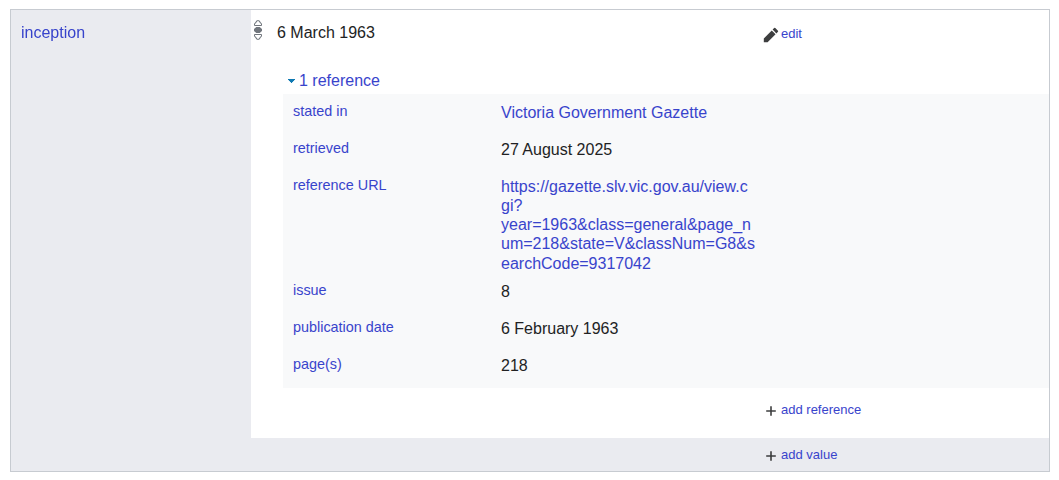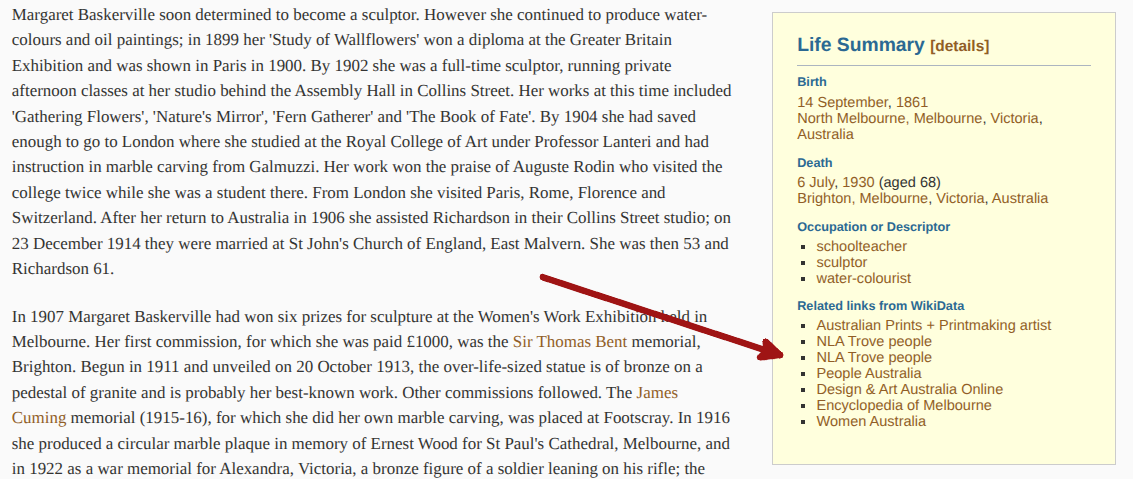WikiFest at the State Library of Victoria
This week I was lucky enough to participate in WikiFest at the State Library of Victoria. Organised by the State Library’s new innovation LAB and Wikimedia Australia, Wikifest was a hands-on, participant-led workshop focused on the possibilities of connecting SLV’s collections to (and through!) Wikidata.
The day kicked off with a series of presentations demonstrating possible uses of Wikidata. I talked a bit about some of my recent GLAM/Wikidata experiments. My slides are online and contain plenty of links to code, demonstrations, and documentation. They’re openly-licensed, so feel free to take anything of use.
The rest of the day was spent in groups, working on particular projects and learning more about Wikidata in the process. My group was looking at providing placed-based entry points to SLV collections, and spent a lot of time exploring the representation of Victoria’s Local Government Areas (LGAs) in Wikidata. We realised there was quite a bit of work to do in adding things like dates and boundaries, but we could see some exciting future possibilities. We also made a start, adding an ‘inception’ date for the City of Moe, based on the Victorian Government Gazette, digitised by the SLV.

Bonus userscript
While I was preparing my presentation I was thinking about the the way entries for Australian people in Wikidata are linked to a range of different identifiers, such as DAAO, the Encyclopedia of Australian Science, and the Australian Dictionary of Biography (ADB). Often a single person can have multiple identifiers and this means that those identifiers themselves become connected through that person’s record. You can query Wikidata with one identifier, and get back links to a range of other information sources about that person.
To demonstrate this, I created a simple userscript that adds additional links to biographies in the ADB. The script grabs the ADB identifier from the url, queries Wikidata for additional identifiers, and writes the results into the page’s ‘Life Summary’. Basic, but useful!

For something more advanced, have a look at the Entity Explosion extension for Firefox.